If you are wondering which fruits and vegetables can freeze, and what the best way is to freeze them, this is your guide! I’ve also given some suggestions for my favourite way to use them once so you can help eliminate food waste in your home.
Now more than ever, we are all trying to make the most out of what we have. I’ve noticed that the fresh produce sections of most grocery stores are much better stocked than the frozen section, so I figured I would give you some tools to make the most of what we have available! While most fruits and veggies can be frozen (yay!), not all can, and some should be cooked or prepped first. Here is a guide to help you navigate your fridges to be as efficient as you can with your fresh produce!
Freezing Fruits and Vegetables
You can freeze most fruits and vegetables for future use which can be a huge help in preventing food waste! The best way to freeze most is to first remove any inedible peels (ie: banana peels), and evenly distribute the food on a baking sheet until frozen. Once frozen you can transfer the frozen fruit or vegetables into large resealable bags or into clear airtight containers. Add a date to the container indicating when it was frozen so you know what to use first!
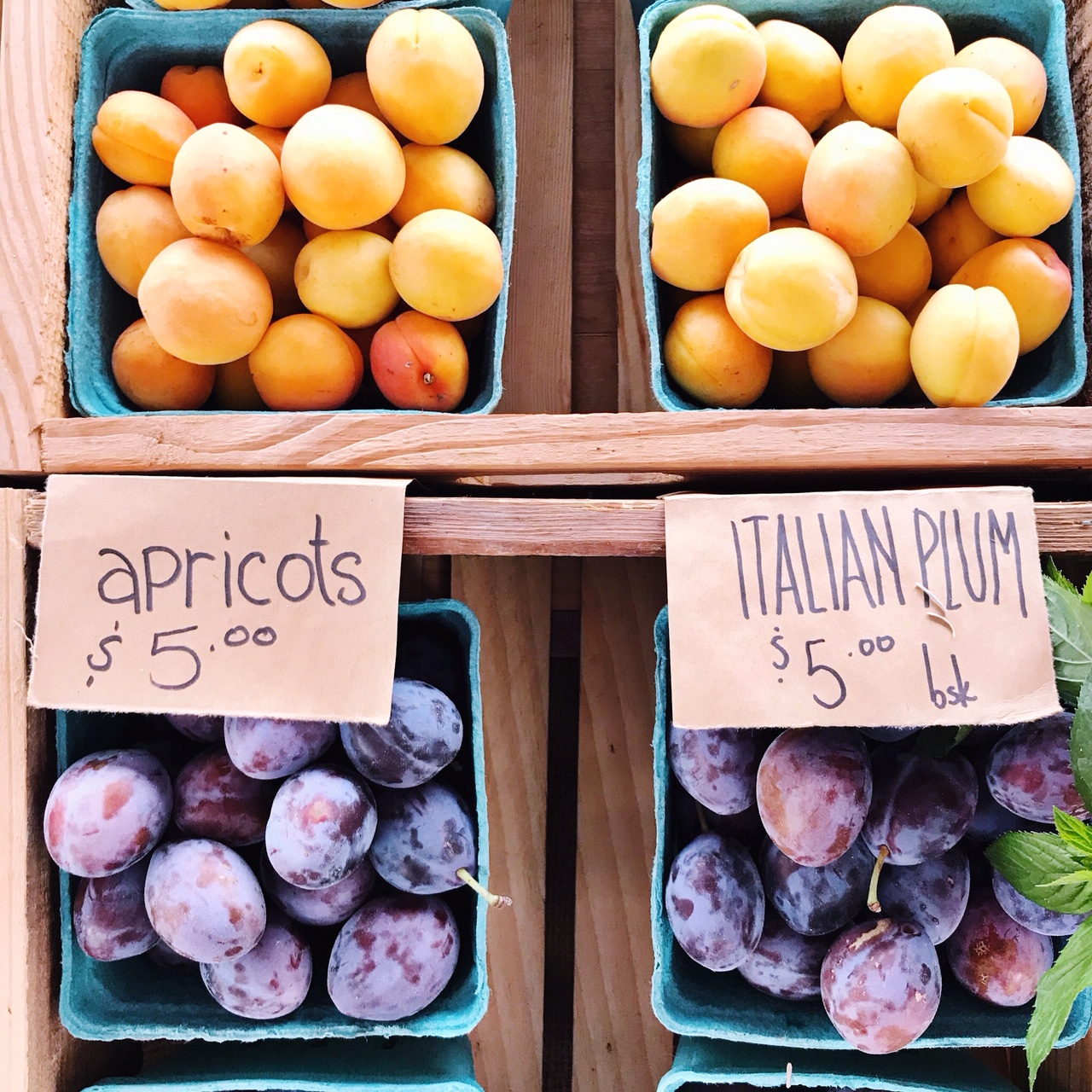
How to Avoid Freezer Burn
Freezing stops the reproduction of bacteria, so assuming your produce is good enough to eat when you are freezing it, you can easily freeze them to extend the life of your fruits and vegetables. What you do have to think about though is freezer burn, which happens when too much air gets in contact with your frozen food.
To avoid freezer burn, remove as much air from the container as you can and seal foods as well as possible (any air can dehydrate the food, which is what causes the freezer burn). Of course, practice FIFO (first in first out) with your frozen food so that nothing sits at the back of your freezer for too long! If you do have something that is freezer burnt, you can, should you wish, cut off that section of the food before using it.
How (and why) to Blanch Vegetables
Some vegetables are better if blanched before freezing. Blanching vegetables helps them last longer and improves the quality by stopping the enzymatic activity that causes vegetables to go bad. To blanch your vegetables simply immerse them in boiling water for 1-2 minutes and immediately plunge them in an ice bath to cool. To freeze simply drain the vegetables and place them on a large baking sheet – transfer them to a resealable container once frozen.
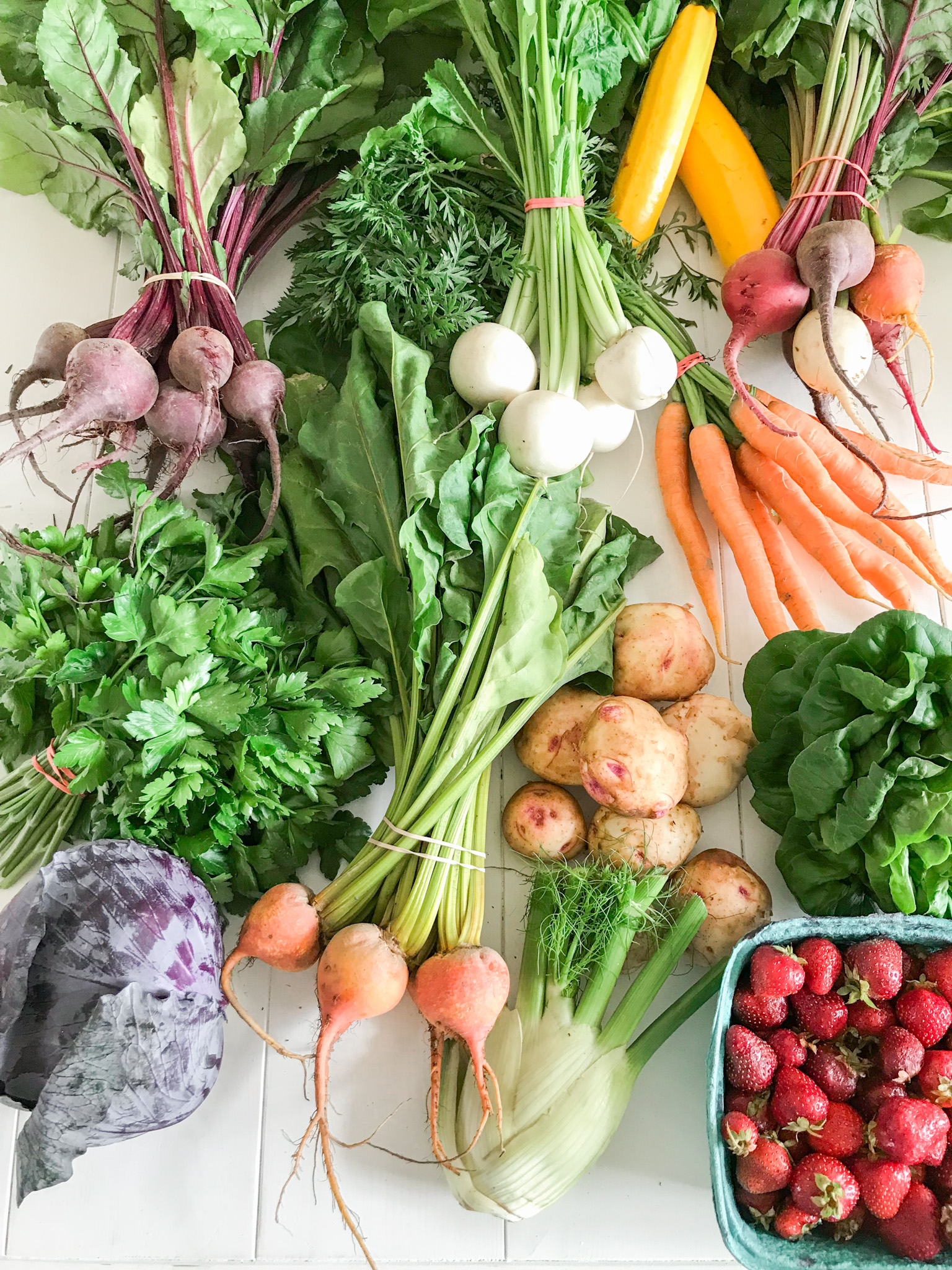
A-Z Fruit & Veggie Freezer Guide
Typically speaking, the higher the water content, the more shape the veggie or fruit will lose when it is thawed. Here are my freezing tips for commonly used fruits and vegetables:
- Apples – you can either grate them and freeze them in an air tight bag or turn them into an apple sauce before freezing in individual containers for baking (try these Double Apple Muffins), stirred into oatmeal or just as a healthy snack on its own.
- Avocados – if you have avocados that are about to turn you can simply peel then dice them, freeze on a baking sheet and store in the freezer to use in smoothies like this Green Smoothie or in a chilled soup like this yummy Green Gazpacho.
- Bananas – freeze bananas by peeling them and placing them on a baking sheet before storing them in an air tight container. I will admit that I have frozen many bananas in their peel and just squeeze out the banana once thawed for use in banana bread (you may want to drain most of the liquid that comes out). Try this Old Fashioned Banana Bread or this made-over healthier Chocolate Olive Oil Banana Bread. You can alternately chop them first which makes them even easier to add to smoothies!
- Bell Peppers– frozen seeded and chopped bell peppers make a great addition to sauces, pastas, and soups. Since they are high in water you will want to cook with them after they are frozen as they break down, making them too soft to enjoy otherwise. Try this Roasted Tomato Pepper Soup.
- Berries – frozen berries are easy to add into pancakes, waffles, or baking recipes. If that’s not your jam then they’re amazing in smoothies! Our family also loves eating them from frozen – you canSpeaking of jam, try using frozen berries to make your own no-fuss Chia Freezer Jam
- Broccoli – frozen broccoli is great to pull out of the freezer and steam, or use it to make this Potato Broccoli Soup. Just cut it into florets and blanch for 1-2 minutes before freezing on a baking sheet.
- Carrots – whether you slice them or dice them, carrots can be used in so many cooked recipes such as chili, soups or stews. You can also grate it to put it in to baking like these Sneaky Mommy Muffins.
- Cauliflower – similar to broccoli, cauliflower is great to have on hand to pull out of the freezer, steam, and serve as a side dish. You can also add it to smoothies! Frozen cauliflower (just cut it into chunks and blanch before freezing) can also be placed on a pan and roasted with olive oil, salt and pepper and pureed into soups or mashed potatoes (try the ones from the cookbook – sooo good!).
- Cherries – cherries are so awesome to have in the freezer for a variety of recipes! You’ll want to pit your cherries before freezing. Spread them out on a baking sheet to freeze then place in a ziplock bag in the freezer.
- Celery – as with carrots, sliced celery is great to use in soups! It holds a little bit of extra moisture so it’s best used in broth base soups like this Hearty Lentil Soup
- Grapes – I freeze grapes whole and love them to eat whole as snacks… especially in the summer time! You can also add them to smoothies.
- Herbs – my grandma always used to take fresh dill and just chop it up and freeze it in a small container to use when she needed it in her Ukrainian recipes! For some other herbs like basil, try chopping it up and mixing it with some olive oil before freezing into ice cube trays to make it easy to add to soups and pastas in a pinch.
- Kale – We love a good Green smoothie in our house and having frozen kale on hand makes life so much easier! Simply wash and dry your kale and tear into smaller pieces before freezing on a baking sheet. I store mine in a resealable bag or make smoothie packs out of them with other frozen fruits and veggies. You can also add frozen kale to soups or pasta dishes for some extra greens.
- Kiwi –Just peel the kiwi and freeze it (cut into chunks if desired) for a quick addition to a smoothie. Note that it will get mushy after freezing.
- Lemons or Limes – You can freeze them whole but they will get mushy when you thaw them (fine if you just want the juice). Alternately you can squeeze the juice and freeze it in ice cube trays and zest them and freeze the zest separately for use in baking – like this Sicilian Citrus Ricotta Bundt Cake or these Lemon Ricotta Pancakes
- Lettuce – Just don’t. (too much water). Same thing with cucumbers or other water-packed veggies.
- Mushrooms – Clean then slice your mushrooms before freezing to make them easier to use in dishes like mushroom soup once thawed. Alternately you can blanch them first in boiling water which may extend their life. Mushrooms are very high in water so they will lose their texture once frozen but still make great additions to cooked dishes.
- Onions – You can simply chop up onions (any kind) and place them in an airtight container. Note that they will lose their shape and some texture once thawed so you will want to use them in cooking (not in recipes that require them to be raw).
- Oranges – Simply peel them then cut them up or keep in segments and freeze on a baking sheet to use in smoothies like this Orange Julius Smoothie!
- Peaches, apricots or plums – With these stone fruits simply remove the pits, cut into wedges and freeze on a baking sheet. Try this Plum Coffee Cake, make a fruit crisp out of them or add them into smoothies (mmmm peach smoothie).
- Pineapple – Simply cut off the skin and ends, remove the core, and cut it up and freeze it on a baking sheet. What a perfect addition to a smoothie!
- Potatoes – Waxy potatoes like yellow potatoes, or even red potatoes, freeze best (uncooked or raw). However, mashed potatoes tend to freeze well in case you have other varieties on hand! Make and freeze dishes like this Lentil Shepherd’s Pie.
- Spinach – when it comes to spinach you can either freeze it raw, or you can sauté it or blanch it to freeze as cooked. Raw spinach is great to add into smoothies or soups (like this Italian Peasant Soup) or cooked spinach is used in these delicious Spanakopitas. You will want to squeeze as much water out of it once it is cooked (just until it wilts then rinse under cold water) – freeze in an air tight container.
- Squash – Winter squash such as butternut, acorn or buttercup freeze so well. Just peel them, remove the seeds and cut them into around 1″ chunks to be used in soups like this Butternut Squash Soup, Butternut Squash Mac n’ Cheese (sooo good) or a stellar twist on lasagne like this Butternut Squash Lasagne! Or if a sheet pan dinner is more your style check out this Apple and Butternut Squash Roasted Chicken. I clearly have a thing for butternut squash but you can sub acorn or buttercup squash for these too.
- Sweet Potatoes – Peel, cube and blanch the sweet potatoes for 2-3 minutes before freezing on a baking sheet. You can also freeze cooked mashed sweet potatoes.
- Tomatoes – You can freeze whole or diced tomatoes for making pasta sauce, pizza sauce, or I roast them for Tomato Soup! This goes for any size of tomato… and honestly you don’t even have to cut them up! If I buy a package of cherry tomatoes I will just wash them and throw them in the freezer in their package and make a roasted soup or roast them for pasta sauces (from frozen at 400F with a drizzle of oil, salt and pepper till blistered). Try out this Rustic Italian Lasagne (just cut up the tomatoes from frozen once slightly thawed) for a veggie packed traditional option.
- Zucchini – frozen zucchini is amazing in baking, check out this post for everything Zucchini related – like this incredible Double Chocolate Zucchini Cake. When it comes to freezing zucchini it’s best to grate it first if using it in baking, just be sure to squeeze out all the excess moisture when ready to use. Try adding them to these savoury Veggie Muffins!
Note that a lot of leftovers also freeze well! Extra pasta sauce, smoothies (put them in popsicle forms for a fun and healthy treat), soups and casseroles all freeze super well and make for a convenient ‘fast food’ when you’re looking for a quick lunch.

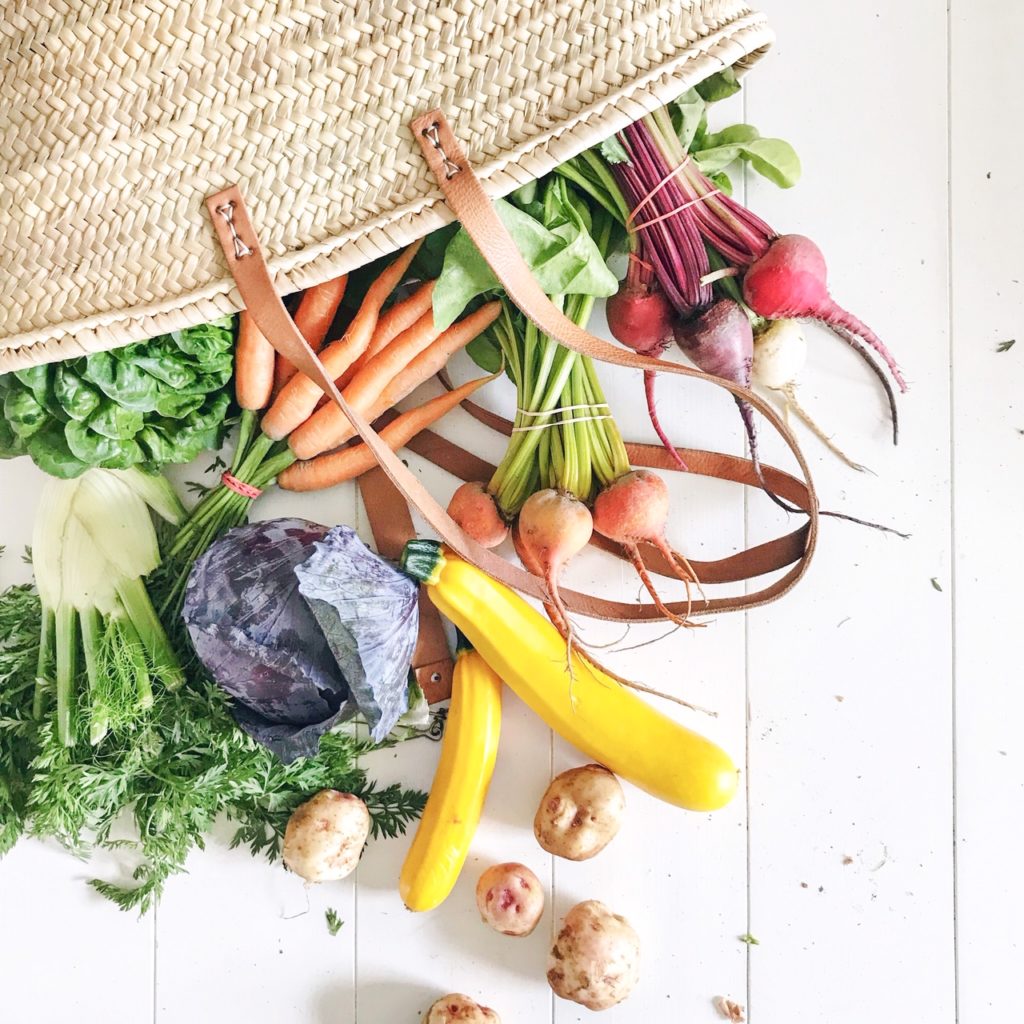
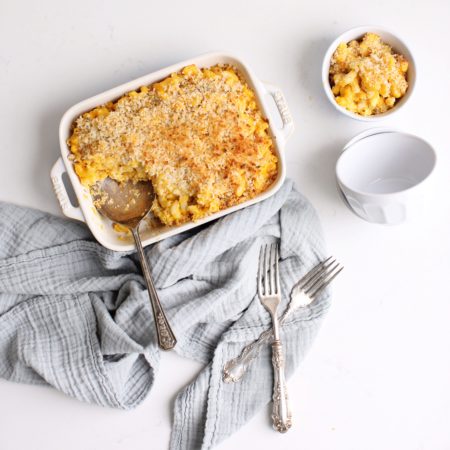
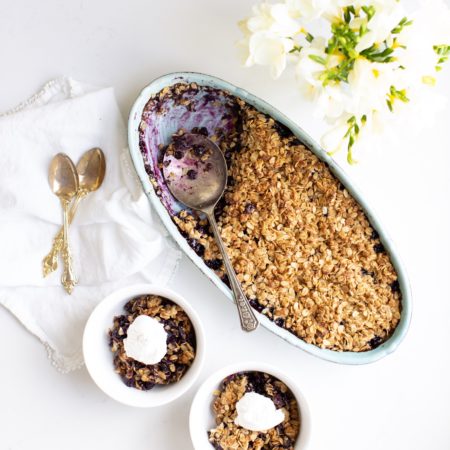
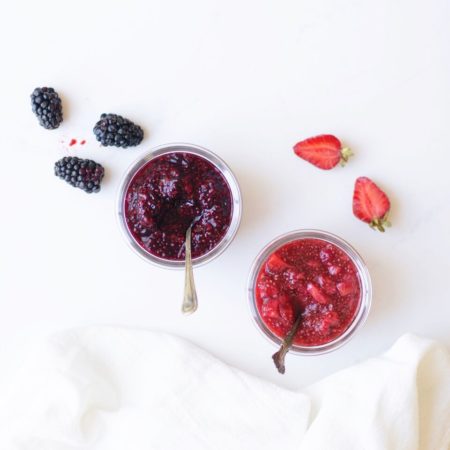

Thank you so much for this great amount of information. For some it may be no big deal or almost common sense. For me this is exactly what I will use to refer to on a regular basis to work on eating healthy and less wasteful. ❤️💐
We just signed up for our first CSA which I am sooo excited about! I will definitely be referencing back to this often to ensure none of our farm fresh produce goes to waste! Also, do you have a reference/shopping guide to your favorite foods/pantry staples…such as the tomato paste you like, or salt you love using, flour, honey, those types of things?? I am always looking to build a better pantry with tried and true staples.
Hi Jennifer! We’re currently putting together a pantry guide, stay tuned!
Thank you for the great information, this really helps! Take care!
This really is the best info, especially during this time. Thank you so very much.
So happy you found it useful Deidre!
Thanks for this guide.
I grow a lot of kale and cilantro – they both grow like weeds – I can never use all the kale. I freeze the leaves whole (after washing). Once frozen, put in a large zipper bag and then crush the frozen leaves. You can continue to add leaves and crush them until the bag is stuffed full.
Cilantro can be frozen and then used – only for flavour as it turns mushy when thawed. I pull the entire plant, select the stems and leaves then wash and air-dry them. Roll the stems up in some cling wrap (like a 3 cm fat cigarette) and trim the ends. Roll again in another layer of cling wrap to cover the exposed ends then freeze the package in a container. When I need cilantro for e.g. falafel, I simply slice off pieces of the frozen package, remove any plastic bits – then return the package to the freezer. Dill can be frozen in the same manner.
I read once that peaches should not be frozen whole but I’ve been doing this for years. You must use only perfect peaches (no bruises, bird pecks etc), washed and air-dried. I prefer Redhavens as they never have any split stones. Tray freeze overnight then place in a zipper bag. You can fit 9 peaches in a large zipper bag so they lay flat in the freezer. To use, microwave for 45 seconds, remove the skin (comes off easy) and then use the peach as you wish. Alternatively you can drop each peach into boiling water for only a few seconds and the skin will slip off. There’s nothing like semi-frozen peach and ice cream in December!
Garlic freezes well too (both the scapes and the root). It’s a messy job to chop up 150 bulbs of garlic but very worthwhile (I grow and use a lot). About this time (March) the garlic in your cellar will be past its prime but frozen garlic is excellent. Either roast it and freeze in small containers or chop and freeze in ice cube trays ( I add a little olive oil) then pop out the cubes into a bag and freeze that. The cubes will be good for a few years.
I hope others will add their own experiences with freezing the garden bounty.
Such great information Steve! You must have an incredible garden, love the tip about kale I’ll have to use that next summer!
Tori, this is all so helpful! Thank you! Would you flash freeze potatoes on a baking sheet and then transfer them to an air tight container? I’d love to see how you organize your freezer with all of these goodies sealed away for later.
Hi Katelin! With any of these I’d recommend freezing on a baking sheet then transferring to another storage container!